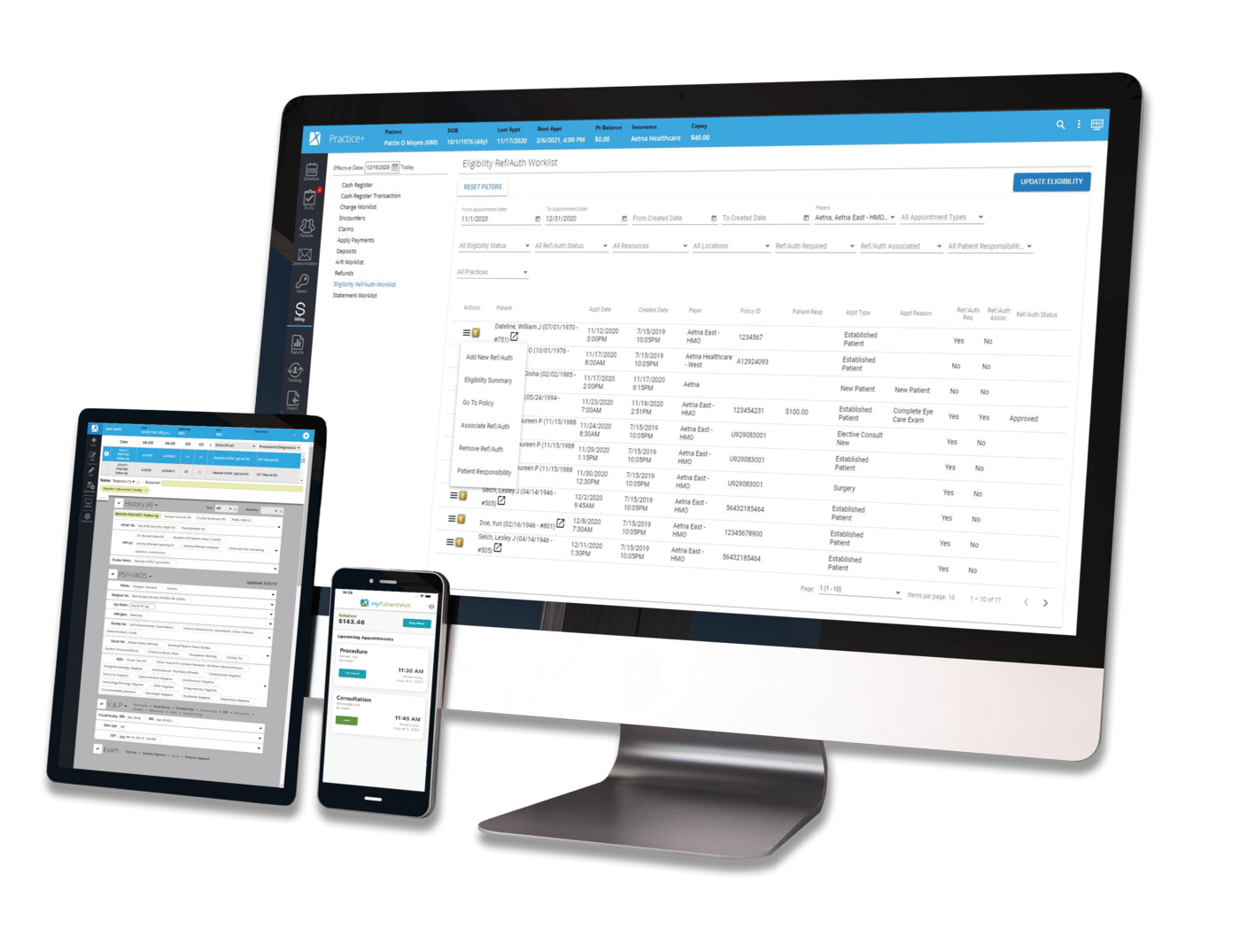Latest Articles
The latest news and information regarding electronic medical records, practice management software, HIPAA, and security from Nextech.

Regulatory & Compliance | Financial Management
By:
Nextech
March 26th, 2015
Even with the most effective medical billing software, all medical practices experience some level of claim denials (when insurance companies refuse to honor requests for health care coverage). According to the American Academy of Family Physicians, the average denial rate for providers is between 5 and 10 percent. However, the general goal is to keep that number below 5 percent, as a lower denial rate means a more abundant cash flow.

Clinical Efficiency | Healthcare Technology
By:
Nextech
March 25th, 2015
Advancements in technology have made mobility possible in the clinic, and it goes well beyond the use of smartphones for sending patient appointment reminders. With tablet computers, physicians and specialists can access patient records anyplace and any time and walk from room to room while continuously charting. Along with enhancing convenience, it promotes patient engagement and can improve workflow.


Patient Engagement | Healthcare Technology
By:
Nextech
March 20th, 2015
Even with vast improvements in patient engagement and scheduling methods, no-showscontinue to be a major concern for practices. When a patient fails to arrive for his or her appointment, it has a negative impact on clinical workflow in a variety of ways, especially when it comes to financial losses. What do no-shows cost providers? A North Carolina-based study looked into the costs of no-shows for health care providers. The researchers created a situational model that applied the average non-attendance rate of 18 percent to a schedule of 24 patients in one day. With perfect attendance, the net gain would have been $4,433.32, but a no-show rate of 18 percent would mean a loss of $725.42, reducing the net gain to $3707.90.

By:
Nextech
March 19th, 2015
Yet Most Support the October 1, 2015 Deadline and Urge Not to Delay Many health care professionals have been rushing to get prepared for the ICD-10 deadline, which is set for Oct. 1, 2015. The Centers for Medicare and Medicare Services set this deadline in May 2014, giving providers about a year and a half to make their systems compliant with ICD-10 software in time for the big switch.

By:
Nextech
March 18th, 2015
Hello, and welcome to the Nextech blog! Today we'll be discussing why specialty physicians require specialty EHRs.

Regulatory & Compliance | Security & Data Management | Healthcare Technology
By:
Nextech
March 17th, 2015
Welcome to the final installment of this blog series—creating a healthcare BYOD policy. You need one of these for a number of reasons. First and foremost, it’s a HIPAA/PHI issue. All the security tools in the world are powerless in the face of human error, and mistakes happen. If and when you have a lost/stolen device, one of the first things HHS is probably going to ask for is a copy of your office’s BYOD policy. Trust me, “What policy?” is not an acceptable answer.

Security & Data Management | Healthcare Technology
By:
Nextech
March 16th, 2015
Anyone in the healthcare industry who plans on adopting a BYOD environment needs to be aware that HIPAA standards strongly recommend (though they do not require) “encryption of all corporate email, data, and documents, in transit and at rest, on all devices” that contain Protected Health Information (PHI). The law does not specifically state that they require you to have encryption. Instead, it just says that healthcare providers with BYOD are “asked” to have it. However, what do you think would happen when and if a PHI breach occurred because your office had a lost/stolen device that wasn’t encrypted? Do you think HHS would show mercy and just decide to let it pass this time?

Security | Regulatory & Compliance | Security & Data Management | Healthcare Technology
By:
Nextech
March 13th, 2015
Now that you’ve had some time to weigh the pros and cons of adopting BYOD, it is time to start working up an adoption plan. For any workplace, this requires researching and investing in certain mobile security tools. It also means addressing a number of key infrastructure and staff issues. Those in the healthcare industry must consider issues such as maintaining devices and network security, just as any other workplace would. However, those in healthcare have additional components they must take into consideration when it comes to BYOD—HIPAA compliance and securing Protected Health Information (PHI). As already mentioned in Part 1, HIPAA violations and PHI breaches can be extremely costly.